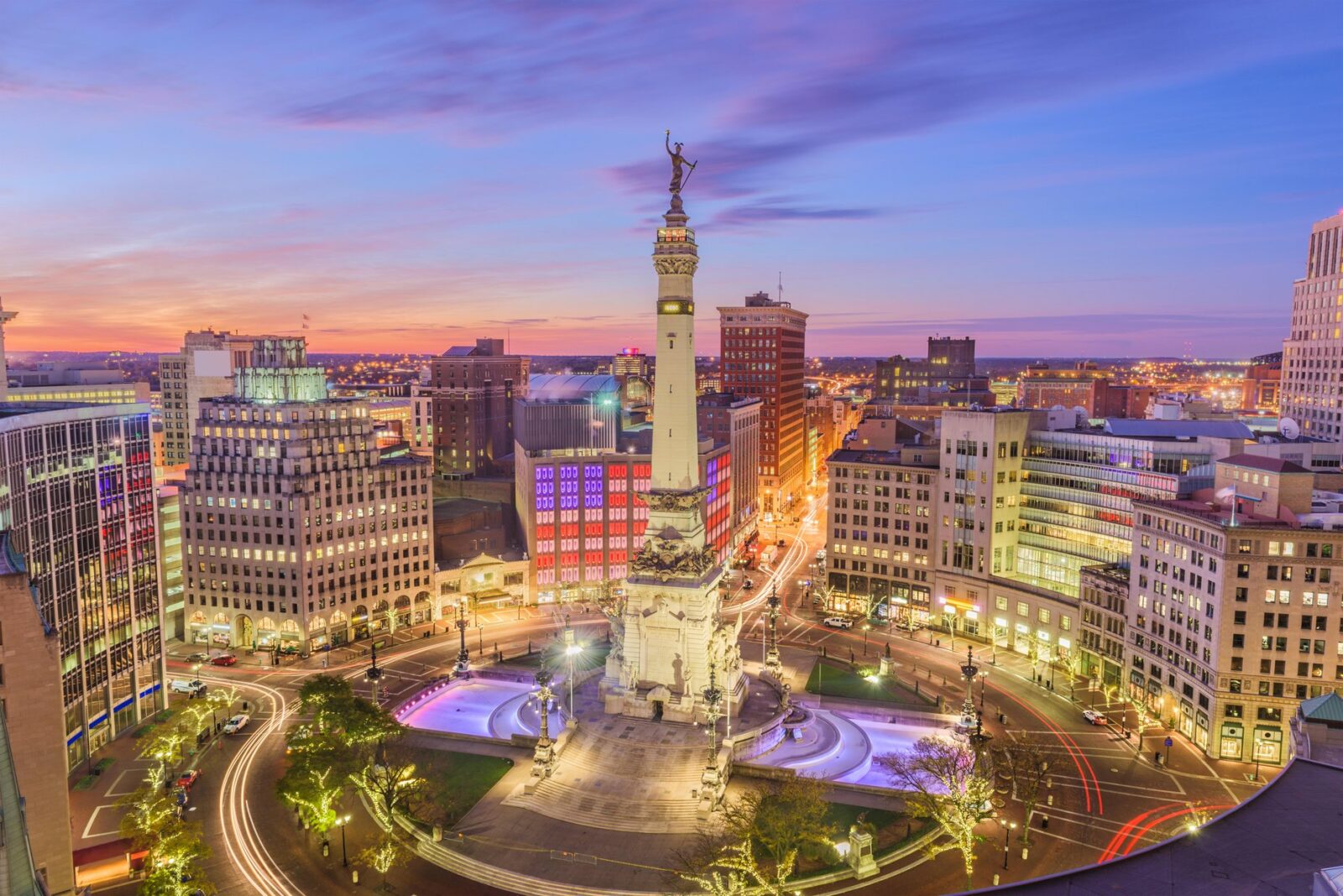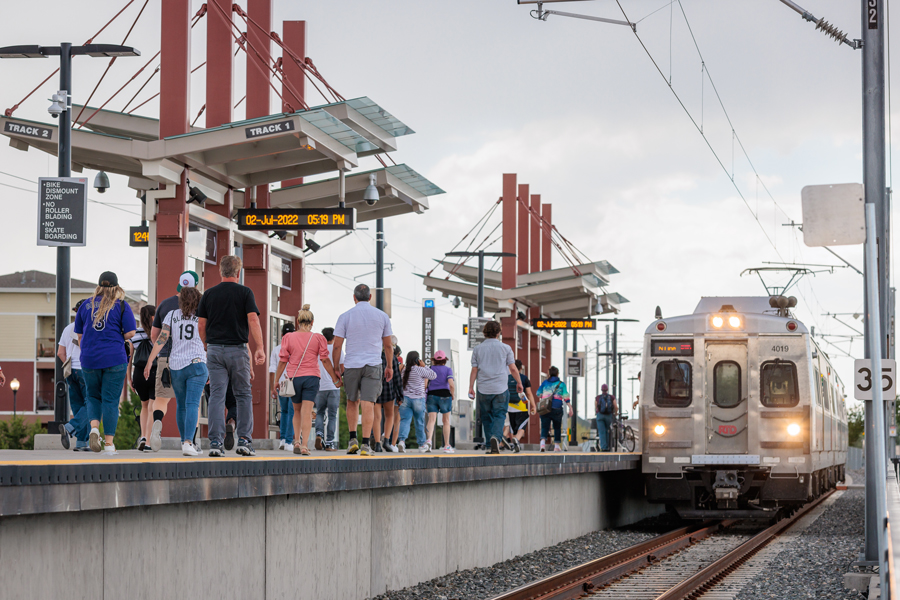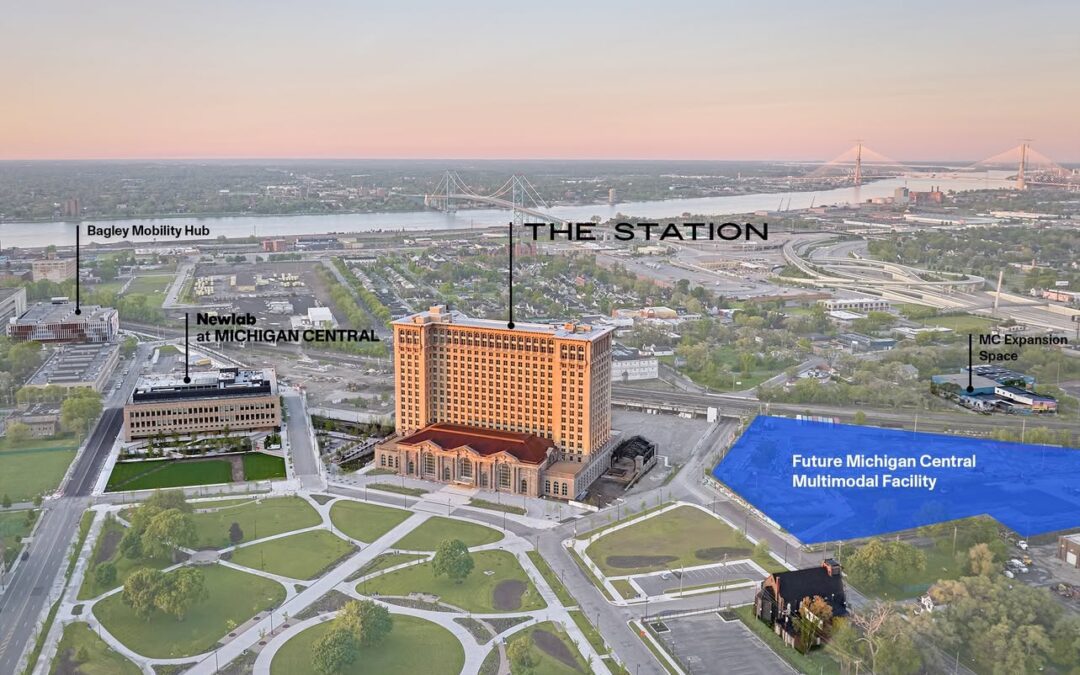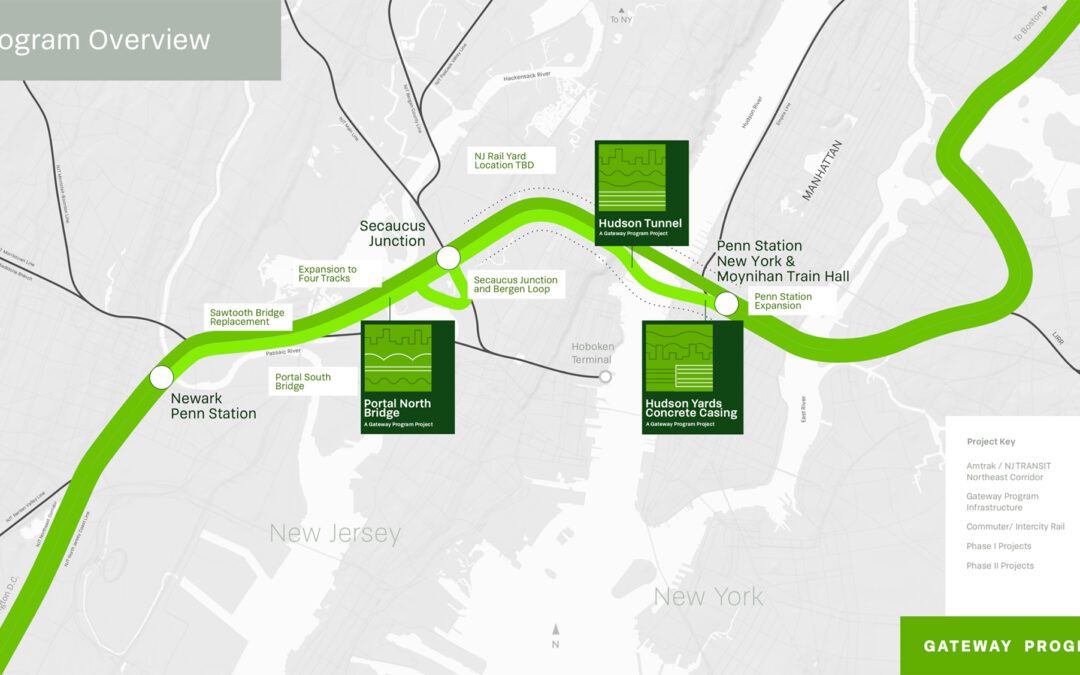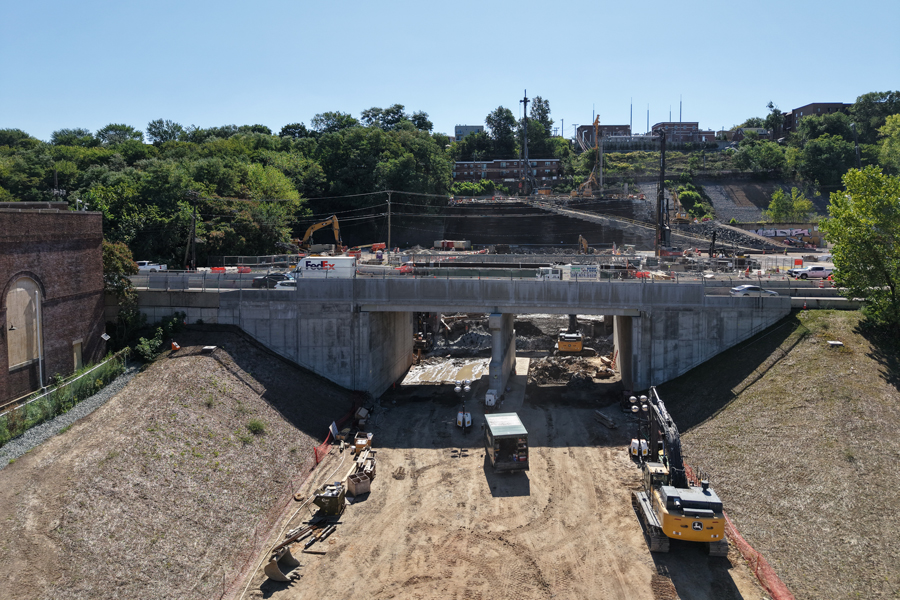Transit, by its very presence, boosts the value of residential property near stations, and helps the property retain value in a down market. At the same time, billions in real estate value would be imperiled by transit service cuts, as transit authorities near the...
Indianapolis’s success in a competitive global economy depends on making the most of its competitive advantages. Fast, frequent trains will do that in three ways: By building a culture of innovation through connectivity; by maximizing Indiana’s geographic advantages as “the Crossroads of America”; and by reinvigorating and expanding its manufacturing base.
The awesome power of connectivity
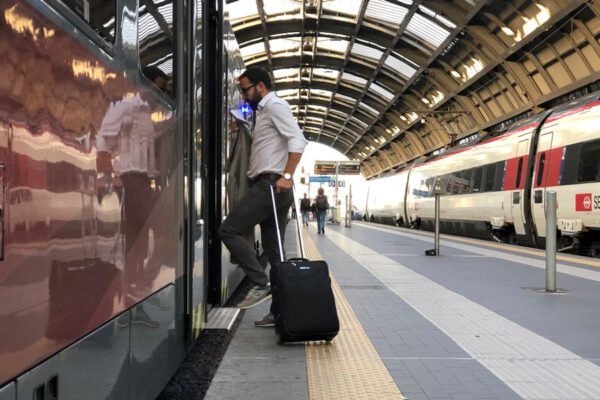
Trains make collaboration and innovation easier.
A 2020 report on the nation’s tech sector makes clear why Indianapolis’s future depends on better mobility and connectivity.
It shows that, when it comes to tech-sector employment, the playing field is tilted against Midwestern cities and states. Just five coastal cities accounted for 90 percent of the “tech and innovation” sector’s job growth from 2005 to 2017. Those cities—Seattle, Boston, San Francisco, San Diego and San Jose—increased their total share of the nation’s total tech employment by roughly 5 points, from 18 to 23 percent.
Tech employment in Indiana did grow during the period, but it was low to begin with. Indianapolis is currently home to less than 3 percent of tech sector jobs, nationally, and Indiana has less than half the tech sector jobs, per capita, of the major tech hubs.
One key difference between Indiana and those hubs is that all the powerhouse tech cities have plans and ongoing projects to increase their connectivity through state-of-the-art trains. And their projects are planned with a regional view in mind.
In New England, for example, a consortium of 8 states and 9 transit providers is advocating for a 15-year, $117 billion proposal to improve train service throughout the northeast. The plans include at least two high-speed rail corridors. In the Pacific Northwest, a public-private coalition anchored by Microsoft is pushing for a high-speed line that would connect Vancouver, B.C. with Portland, OR, via Seattle.
And California is currently building the nation’s first high-speed rail system, connecting San Francisco to L.A. That project is driving upgrades to local transit systems like CalTrain, the commuter-train system that serves Silicon Valley. When the upgrades are complete, it will be the first U.S. regional-rail system offering commuter rail service on par with the world-class systems in Europe.
In short, forward-thinking economies get richer because they’re well connected, and they invest in the tools and infrastructure that promote a robust flow of people and ideas across city, county, and state lines.
The great news here is that Indiana’s legacy as a railroad hub means that much of the infrastructure is already in place, waiting to be upgraded and expanded. The project to double-track the South Shore line from Gary to Michigan City—which is set to get underway soon and will vastly improve commuter service between northern Indiana and Chicago—is a great example of how Indiana can get this done.
Building a thriving network of fast, frequent trains won’t happen all at once. It will be a segment-by-segment endeavor. And it will mean building not only new, high-speed lines but upgrading existing lines and improving conventional train service—which will build momentum for high-speed trains by raising the bar for what train travel can (and should) be.
A new plan for a thriving heartland
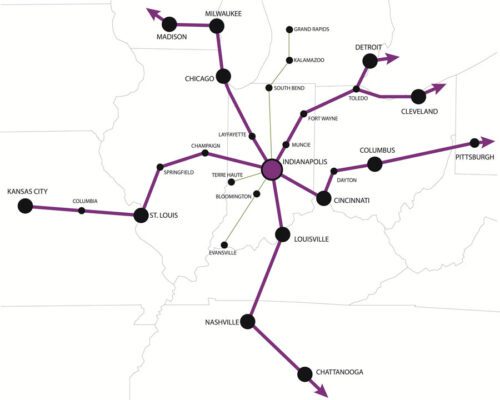
Within a 300-mile radius of Indianapolis are 30 medium to large cities, from nearby Bloomington and Lafayette to Milwaukee, Cleveland, and Nashville. High-speed trains would bring these cities closer together.
Indiana’s location in the heart of a population-dense, resource-rich region is its second competitive advantage—one that is reflected in its motto, the “Crossroads of America.”
Consider the numbers. About one-sixth of the U.S. population—55 million people—live within 300 miles of Indianapolis. That’s nearly twice the number of people living within 300 miles of “buzzy” cities like Austin and Los Angeles (29 million and 30 million people, respectively). And it blows away most other major cities, including Atlanta (37 million), Charlotte (36 million), Phoenix (16 million), and Seattle (12 million). For comparison, 67 million people live within 300 miles of Philadelphia, which is right in the heart of the nation’s most densely populated region.
Outside of New England and the mid-Atlantic states, in short, there’s nothing remotely comparable to the population density of the Midwest. Which means that several of the nation’s largest cities—and a significant share of the nation’s people—are within an easy, two-hour ride of Indianapolis on a high-speed train.
Why does that matter?
For starters, high-speed trains would be a huge boon to the state’s tourism economy—attracting people from across the region to sports and entertainment events, museums, stores and restaurants, and more. Establishing Indianapolis as a high-speed rail hub—with arrivals and departures throughout the day, every day—would make the city a premiere tourist destination in a way that it’s never been.
Less obviously but even more importantly, high-speed trains would create tighter connections and stronger ties between the region’s institutions. Indiana alone has three world-class research universities—Indiana, Purdue, and Notre Dame. Easy travel between them via high-speed rail would connect them more closely to not only each other but to the vast resources in Chicago (to the northwest) and Ann Arbor/Detroit (to the northeast).
It takes a paradigm shift to see the benefits of that integration. Old habits cause us to think of cities and states as competitors in a zero-sum game of winners and losers. The reality is that, in modern economies, regions rise and thrive when they pull together and create new opportunities for flows of people, ideas, and innovation across state lines.
Boston is improved—not diminished—by faster and easier access to New York. And vice versa. The same is true of Seattle and Portland. The same could be true of Indianapolis and Chicago—and of Indiana and the Midwest broadly.
The future lies in collaboration. Indiana and surrounding states should be sharpening and improving each other. High-speed rail is the most powerful tool we have to make that happen.
Build back better—with trains
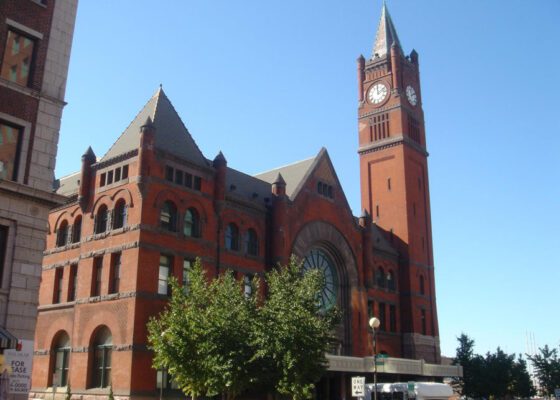
Indianapolis Union Station is largely intact and could be easily converted into a great place to catch trains.
Indiana also has the competitive advantage of its legacy as a hub of manufacturing. Focusing on trains will help it build on, expand, and even improve that legacy.
A century ago, when the first segments of a national highway network were being built, Indiana emerged as one of the key sites of automobile and auto-supply manufacturing. That model defined its twentieth-century economic history.
While auto-related manufacturing will be a pillar of Indiana’s economy for decades, at the least, trains have huge potential to drive growth and economic reinvention. As one report noted, “passenger rail and transit rail manufacturing growth helps strengthen a broader manufacturing recovery—creating and sustaining manufacturing jobs in railcar and locomotive assembly, as well as across a wide range of American industry, ranging from steel smelting to fabric design.”
Take the case of JP Corporation, which is located near Amtrak’s national maintenance and repair facility in a suburb of Indianapolis (Beech Grove). Founded in 1946, it describes itself as a “family owned and operated, ultra-modern machining company serving clients large and small all across North America.” In the late 1970s, making custom bolts and assemblies for Amtrak became its specialty. In 1999, it won Amtrak’s “woman-owned business enterprise of the year” award. It continues to serve the heavy transportation, aerospace, and automotive industries.
Similar stories abound across the state and nation. In Indiana alone, there were nearly 80 companies in the U.S. passenger rail and transit rail supply chain in 2015. With the U.S. poised to invest heavily in railroads over the near term, and with high-speed rail and transit systems growing at an explosive rate globally, Indiana has an amazing opportunity to reinvigorate its economy with trains. That means not only using them but manufacturing the component parts.
It’s been done before, when automobiles connected the nation and built the foundation of America’s middle class with good-paying manufacturing jobs.
It can be done again, but better this time. With modern, state-of-the-art trains, the state’s economic foundation can be not only a faster, better transportation technology but one that connects communities, builds a vibrant regional economy, and creates sustainable development patterns.
Drawing on the past to build a better future—with trains. It’s the path to a vibrant, twenty-first century economy. What are you waiting for, Indiana?
The Latest from HSRA
Our Latest Blog Posts
Check out the latest news, updates, and high speed rail insights from our blog!
